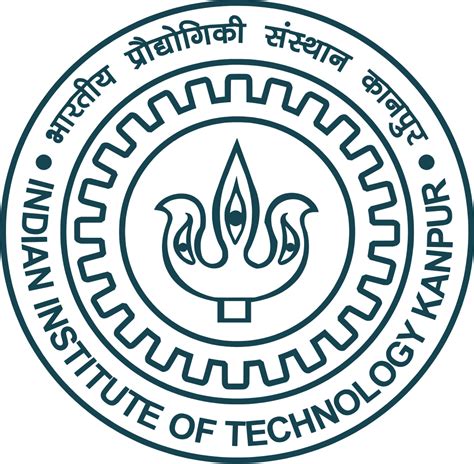
Education / Work History
- Ph.D., Indira Gandhi Centre for Atomic Research, Homi Bhabha National Institute, India (2020)
- Advisor : Prof. John Philip
- Thesis : Studies on nano-inclusion assisted enhancement in thermal conductivity and photo-thermal conversion of organic phase change materials
- M.Sc., IIT-BHU, India
Research Topic / Interest
Contact me to know my current interests.
Publications
These will include only those published in our lab. See Google Scholar for the rest.
-
Diluting Convective Effects in Femtosecond Laser Induced Thermal Lens Measurements with Thermally Active Constituents.
S. Chakraborty, A. K. Mishra, A. K. Rawat, and D. Goswami, in Frontiers in Optics + Laser Science 2022 (FIO, LS) (2022), Paper JW5A.25 (Optica Publishing Group, 2022), p. JW5A.25
[Abstract]
[PDF]
[BibTeX]
Abstract: We report Thermal Lens measurements on the binary liquid mixtures of Methanol and Phenol with femtosecond pulse excitations. The photothermal response is found to be strongly dependent on relative concentrations and the constituents’ molecular properties.
BibTeX: @inproceedings{chakrabortyDilutingConvectiveEffects2022, title = {Diluting {{Convective Effects}} in {{Femtosecond Laser Induced Thermal Lens Measurements}} with {{Thermally Active Constituents}}}, booktitle = {Frontiers in {{Optics}} + {{Laser Science}} 2022 ({{FIO}}, {{LS}}) (2022), Paper {{JW5A}}.25}, author = {Chakraborty, Subhajit and Mishra, Amit Kumar and Rawat, Ashwini Kumar and Goswami, Debabrata}, date = {2022-10-17}, pages = {JW5A.25}, publisher = {{Optica Publishing Group}}, url = {https://opg.optica.org/abstract.cfm?uri=FiO-2022-JW5A.25}, urldate = {2022-12-31}, eventtitle = {Frontiers in {{Optics}}} } -
Quality Assessment of the Commercially Available Alcohol-Based Hand Sanitizers with Femtosecond Thermal Lens Spectroscopy.
S. Chakraborty, A. K. Rawat, A. K. Mishra, and D. Goswami, PeerJ Analytical Chemistry 5, e25 (2023)
[Abstract]
[PDF]
[BibTeX]
Abstract: Using femtosecond-pulse-induced thermal lens spectroscopy (FTLS), we report a novel method for the quality measurements of alcohol-based hand sanitizers (ABHS). To sustain its effectiveness, the ABHS must contain the recommended concentration of alcohol content. We diluted the hand sanitizer with water to reduce the quantity of alcohol in the mixture and then performed thermal measurements on it. We performed both dual-beam Z-scan and time-resolved TL measurements to identify the alcoholic content in the ABHS. The thermal lens (TL) signal of the solvent is capable of detecting any relative change in the alcohol content in the mixture. Our technique, therefore, emerges as a sensitive tool for quality testing of alcohol-based hand sanitizers.
BibTeX: @article{chakrabortyQualityAssessmentCommercially2023, title = {Quality Assessment of the Commercially Available Alcohol-Based Hand Sanitizers with Femtosecond Thermal Lens Spectroscopy}, author = {Chakraborty, Subhajit and Rawat, Ashwini Kumar and Mishra, Amit Kumar and Goswami, Debabrata}, date = {2023-05-30}, journaltitle = {PeerJ Analytical Chemistry}, shortjournal = {PeerJ An. Chem.}, volume = {5}, pages = {e25}, publisher = {{PeerJ Inc.}}, issn = {2691-6630}, doi = {10.7717/peerj-achem.25}, url = {https://peerj.com/articles/achem-25}, urldate = {2023-07-28} } -
Understanding the Photothermal Response of CBNP Nanofluids Using Thermal Lens Spectroscopic Techniques.
S. Chakraborty, A. K. Mishra, A. K. Rawat, and D. Goswami, in Frontiers in Optics + Laser Science 2021 (2021), Paper JTu1A.99 (Optica Publishing Group, 2021), p. JTu1A.99
[Abstract]
[PDF]
[BibTeX]
Abstract: We performed a dual beam Z-Scan experiment to examine the thermal lensing effects in CBNP nanofluids. The photothermal characteristics and heat dissipation dynamics were observed for these nanofluids at different levels of their linear absorption.
BibTeX: @inproceedings{chakrabortyUnderstandingPhotothermalResponse2021, title = {Understanding the {{Photothermal Response}} of {{CBNP Nanofluids Using Thermal Lens Spectroscopic Techniques}}}, booktitle = {Frontiers in {{Optics}} + {{Laser Science}} 2021 (2021), Paper {{JTu1A}}.99}, author = {Chakraborty, Subhajit and Mishra, Amit Kumar and Rawat, Ashwini Kumar and Goswami, Debabrata}, date = {2021-11-01}, pages = {JTu1A.99}, publisher = {{Optica Publishing Group}}, doi = {10.1364/FIO.2021.JTu1A.99}, url = {https://opg.optica.org/abstract.cfm?uri=LS-2021-JTu1A.99}, urldate = {2022-12-31}, eventtitle = {Laser {{Science}}} } -
Investigating the pH Dependence of Thermal Signatures in Monohydric and Polyhydric Alcohols Using Time-Resolved Thermal Lens Spectroscopy.
A. K. Rawat, S. Chakraborty, A. K. Mishra, and D. Goswami, Optical Materials 137, 113623 (2023)
[Abstract]
[PDF]
[BibTeX]
Abstract: We study the influence of pH on the thermophysical properties of monohydric and polyhydric alcohols through a femtosecond laser-induced thermal lens (TL) spectroscopic technique. Relative changes in the thermal signatures of monohydric and polyhydric alcohols are identified at different pH levels using both dual-beam Z-scan and time-resolved TL measurements. We found the TL signatures of the alcohols not to be affected in the acidic region, but a significant change is noticed in the alkaline environment. It is observed that in an alkaline environment (pH > 7), the TL signal significantly increases for short-chain (MeOH and EtOH) monohydric alcohols. In contrast, the TL signal for longer chain length monohydric alcohols (HxOH and phenol) and polyhydroxy alcohols (Ethylene glycol & Glycerol) fall enormously. These results depend strongly on the molecular characteristics of solvents and their interaction strength with the solute as a function of changing pH strength. Our results show the influence of pH on the natural drifting and the heat dissipation characteristics of solvent molecules, which prominently participate in changing the TL signatures of samples. This event could be attributed to changes in molecular arrangements by developing solvation shells (through ions-solvents interactions) in the systems. We investigate the influence of various factors, namely, chain length, structure, polarity, and inter or the intra-H-bonding ability of solvent molecules and ion concentration, which effectively alter the solute-solvent interaction strengths at different pH values (especially in an alkaline environment). The findings through our TL measurements explore this event in great detail for the first time. We try to correlate the molecular characteristics and its ions-solvent interaction effects with the thermophysical properties of alcohols.
BibTeX: @article{rawatInvestigatingPHDependence2023, title = {Investigating the {{pH}} Dependence of Thermal Signatures in Monohydric and Polyhydric Alcohols Using Time-Resolved Thermal Lens Spectroscopy}, author = {Rawat, Ashwini Kumar and Chakraborty, Subhajit and Mishra, Amit Kumar and Goswami, Debabrata}, date = {2023-03-01}, journaltitle = {Optical Materials}, shortjournal = {Optical Materials}, volume = {137}, pages = {113623}, issn = {0925-3467}, doi = {10.1016/j.optmat.2023.113623}, url = {https://www.sciencedirect.com/science/article/pii/S0925346723001957}, urldate = {2023-07-28} } -
Unraveling Molecular Interactions in Binary Liquid Mixtures with Time-Resolved Thermal-Lens-Spectroscopy.
A. K. Rawat, S. Chakraborty, A. K. Mishra, and D. Goswami, Journal of Molecular Liquids 336, 116322 (2021)
[Abstract]
[PDF]
[BibTeX]
Abstract: Non-contact localized laser heating-based thermal lensing has emerged as a technique for probing the heat transport in liquids. A mode-mismatched dual-beam pump–probe spectroscopic technique was employed to investigate the photothermal response and modes of heat dissipation in methanol and binary mixtures of methanol with polar (water, methanol (MeOH)) and nonpolar (CCl4) solvents. We recorded the time-resolved thermal lens (TL) signal of a probe beam at 780 nm after heat deposition by a 1560 nm pump beam. For pure solvents, the TL signal was found to be approximately one order of magnitude larger for methanol than for water, DMSO, or CCl4, implying that the energy deposition is larger for methanol than for any of the other solvents. Subsequently, binary mixtures were studied where the TL signal increased with an increase in the volume fraction of methanol. All TL signals are shown to have a physical interpretation in terms of heat conduction and convection. In the case of methanol–water, the observed trend can be rationalized in terms of a strong intermolecular interaction. Convective heat transfer is shown to dominate the overall heat transfer in pure methanol and in binary mixtures for all volume fractions where MeOH is in excess of 50%. No convection is observed for very dilute mixtures with a small amount of methanol; in this case, heat conduction is sufficient to reach equilibration. Interestingly, for binary mixtures of methanol with DMSO or water, a decreasing trend is observed in the concentration range between 90% and 100% volume fraction of methanol. We observe also that the TL signal is modified in case of intermolecular interactions forming large clusters of methanol with the cosolvent. In such cases, heat diffusion is affected. Thus, TL can be seen as a sensitive probe for intermolecular interactions as well.
BibTeX: @article{rawatUnravelingMolecularInteractions2021, title = {Unraveling Molecular Interactions in Binary Liquid Mixtures with Time-Resolved Thermal-Lens-Spectroscopy}, author = {Rawat, Ashwini Kumar and Chakraborty, Subhajit and Mishra, Amit Kumar and Goswami, Debabrata}, date = {2021-08-15}, journaltitle = {Journal of Molecular Liquids}, shortjournal = {Journal of Molecular Liquids}, volume = {336}, pages = {116322}, issn = {0167-7322}, doi = {10.1016/j.molliq.2021.116322}, url = {https://www.sciencedirect.com/science/article/pii/S0167732221010461}, urldate = {2023-07-28} }
